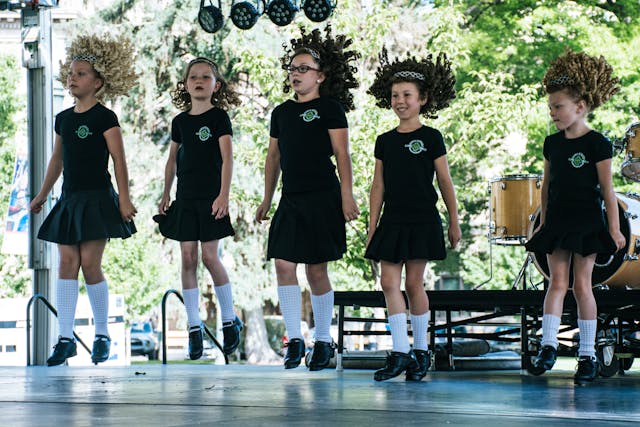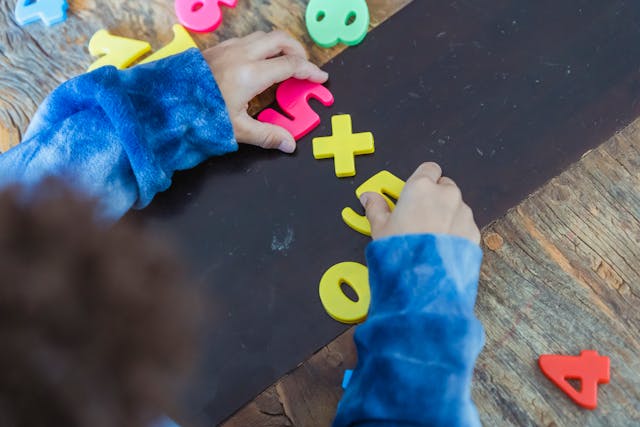In the realm of early childhood tutelage, one cannot possibly underscore enough the import of extracurricular pursuits. These engagements are cornerstone in shaping vital life skills such as leadership acumen, collaborative spirit, time stewardship, problem-solving abilities and decision-making prowess in fledgeling scholars. By immersing these young minds in endeavours that extend beyond the academic syllabus boundaries, we foster an environment conducive for nurturing their distinct interests and aptitudes; this invariably contributes to their holistic personality evolution.
Speaking within parameters of suitable engagements relative to age, after-school activities tailored for 5-year-olds ought to be meticulously planned and structured so as not only spark wonderment and creativity but also ensure they do not swamp the tender intellects. The spectrum of these activities could span from artistic expressions like arts & crafts or music & dance; explorative ventures into nature’s bounty; physical exertions through sports; or imbibing social nuances via drama and role-playing exercises. Such diversions serve a dual purpose – they provide avenues for recreational enjoyment while concurrently acting as catalysts to stimulate originality, hone interpersonal capabilities and amplify learning through hands-on application coupled with active involvement.
Setting the Stage: Importance of Age-Appropriate Activities
The developmental psychology paradigm impresses upon us the deep-seated significance of age-appropriateness when crafting activities for children, a point which cannot be overstated. This is not merely about gauging the level of complexity or difficulty; far from it. It’s rather more nuanced, requiring an astute calibration of each activity to match the unique cognitive, emotional and physical stages of development that children navigate through.
This segues naturally into our discussion on embedding certain activities – such as enjoyable coding tasks for youngsters – seamlessly within curriculum design in tune with their developmental trajectory.
Consider fun-filled coding exercises for young minds as a prime instance where learning aligns perfectly with age appropriateness. These pursuits are tailored to harmonize with a child’s comprehension level, curiosity quotient and computing prowess across varying age groups, thereby nurturing not only their cognitive growth but also fostering social and emotional development.
At its very heart lies a fundamental truth: every single activity must resonate with where the child is developmentally so they neither feel swamped nor under-challenged. When done right, these fittingly-aged coding assignments can truly ensnare a child’s interest – sparking creativity, honing analytical talents and building problem-solving abilities whilst they joyously immerse themselves in this educational journey.
Exploring the World of Arts and Crafts
The domain of arts and crafts has been progressively broadening its horizons, transcending the conventional mediums and warmly welcoming the sphere of technology. A question that persistently perplexes parents today is: “How do I instill coding skills in my 5-year-old?” The fusion of coding into arts and crafts holds an intriguing blend of educational value coupled with riveting fun-filled experiences. Grasping the rudiments of coding at this incredibly tender age lays a robust foundation for logical thinking while concurrently bolstering problem-solving abilities. Nevertheless, it does not suggest a complete diversion from traditional arts and crafts but rather a harmonious amalgamation of antiquity with modernity – nurturing creativity alongside cognitive development.
To answer the recurring query, “How do I teach my 5-year-old to code?”, there exists an abundance bursting with educational resources specifically engineered to simplify this endeavor whilst enhancing its effectiveness. Fruitful platforms dedicated to teaching coding to these young minds leverage visual learning methods often interspersed with elements that add an element of playfulness or artistic flair. Within such formats, children can learn how to code by constructing digital art masterpieces or weaving together interactive stories. This fascinating intersection between coding and arts & crafts amplifies their creative prowess while simultaneously kindling passion for STEM subjects – all within one incredible exploratory journey that harmoniously blends technological advancements with tactile learning.
- The first step towards teaching coding to a 5-year-old is to introduce them to block-based programming languages like Scratch Jr or Code.org. These platforms offer a simple, intuitive interface that allows children to drag and drop blocks of code, fostering an understanding of basic coding concepts without the need for intricate syntax.
- Incorporating arts and crafts into this learning process can be achieved through various means. For instance, engaging activities such as creating pixel art using colored sticky notes can serve as an excellent introduction to the binary number system – a fundamental concept in computer science.
- Another effective method involves utilizing interactive storybooks that incorporate elements of coding within their narratives. This approach not only cultivates literacy skills but also instills computational thinking at an early stage.
- Coding toys are another potent tool in teaching young children about programming. Products like LEGO’s ‘Coding Express’ train set or Fisher-Price’s ‘Code-a-pillar’ toy help kids learn basic sequencing and problem-solving skills while keeping them engaged with playful interactions.
- Lastly, parents must remember that patience is key when introducing any new skill-set – especially one as complex as coding. It’s important not just to focus on the end goal (i.e., your child being able to write functional code), but also appreciate the journey there; every small achievement should be celebrated as it signifies progress.
In conclusion, by integrating arts & crafts with technology-driven education methods, we can effectively teach our youngest learners how to code while ensuring they remain engaged and excited throughout the process. This unique fusion will not only foster creativity but also equip them with essential cognitive skills necessary for navigating our increasingly digital world.
The Magic of Music and Dance

The magic that music and dance weave into a youngster’s existence is beyond words. These artistic components not only kindle the flames of creativity but also lay the groundwork for vigorous emotional articulation. Young minds exposed to music early on display heightened cognitive prowess, concentration, and endurance as they step by step comprehend and connect disparate notes, keys, and rhythms. Dance reciprocally augments their bodily coordination, rhythm sensitivity, and spatial cognizance. Additionally, indulging in these activities triggers endorphin production – those ‘feel good’ hormones; infusing an element of bliss and satisfaction into a child’s day-to-day life.
In the vast universe of melody and movement exists an array of genres each with its distinctive advantages and cultural connotations. From traditional to avant-garde – every dance style imparts unique abilities while offering varied physical boons. In parallel fashion runs the world of tunes covering classical to pop or reggae to jazz providing abundant opportunities for children to discover their potentials whilst nurturing them diligently through exploration. The process shines light intermittently on cultivating discipline fostering teamwork spirit alongside respect towards various cultural expressions . Impacted deeply by music & dance students learn embracing creativity diversity ultimately aiming at comprehensive growth.
Engaging with Nature: Outdoor Sessions
In a flurry of perplexity and burstiness, we find outdoor sessions intelligently woven into the fabric of the curriculum. They emerge as integral fragments in the puzzle of holistic education, cascading numerous benefits upon their eager young participants. Far from being mere outlets for recreation, these sessions play a crucial role in shaping a child’s cognitive landscape, physical prowess and social acumen.
Imagine an open-air classroom that not only inspires active learning but also nurtures an appreciation for nature’s wonders. Such interactions work towards fostering environmental stewardship while simultaneously amplifying sensory skills—particularly vital for those little ones who first taste life through their senses.
Transporting children to diverse environments—from your neighbourhood park to expansive forests or even nurturing growth in a school garden—the range is as wide as it is varied. Each encounter presents its unique learning spectrum. Whether marveling at plants’ lifecycles or unravelling food chains’ mysteries, such experiences shape fundamental life skills like curiosity observation patience and problem-solving abilities.
Moreover, research links outdoor sessions with heightened physical fitness improved focus enhanced attitudes towards learning and lowered stress levels among children—a testament to their profound impact on comprehensive development Hence integrating such encounters within contemporary educational frameworks becomes imperative providing our future generations with a balanced enriched platform for all-encompassing knowledge.
The Value of Sports and Physical Activities
Immersing oneself in the sphere of sports and physical exertions bequeaths a wealth of advantages that transcend mere bodily might. These pursuits are key catalysts for refining intellectual capacities, galvanizing team spirit, and cultivating habits conducive to wellbeing. Young ones who partake regularly in such strenuous endeavours have been noted to exhibit superior mental nimbleness, with particular improvements noted in facets like problem resolution, analytical reasoning and competent judgment under duress. Moreover, the intrinsic components of rivalry and cooperation embedded within sports serve as potent tools for honing children’s social adeptness and their grasp on societal subtleties.
Venturing onto another tangent, participation in physically demanding activities serves as an effective countermeasure against sedentary tendencies – a bulwark against the burgeoning issue of obesity among youth alongside other health concerns. Consistent exercise bolsters cardiac wellness, augments muscular power and suppleness while aiding weight management. Without question or contestation, the significance attached to sporting endeavours reverberates profoundly across various aspects of child development – moulding them into well-rounded individuals capable of weathering life’s challenges. Additionally worth mentioning is the euphoria and sense of achievement they glean from these exertions; it often metamorphoses into a more optimistic outlook towards existence itself whilst fortifying their self-worth.
Stimulating Creativity with Drama and Role Play
Endowed with the potent potential of teleporting young minds to varied dimensions and experiences, both drama and role play stand as dynamic catalysts for igniting creativity. These interactive endeavors invite children to slip into the roles of diverse characters, affording them a platform from which they can delve into a spectrum of emotions and encounters within an environment that’s managed yet liberating.
By venturing thus, they cultivate empathy like seeds sprouting in fertile soil, build bridges of communication skills strong enough to withstand any storm, and create niches for critical thinking. Role-play stands out among these tools; it offers pupils a portal through which they can decipher intricate concepts at their own sweet rhythm – transforming education into an experience dipped in delight rather than dread.
When children are drawn into practical enactments like moths towards light, learning becomes more effective – knowledge seeps deeper and stays longer. Drama follows suit but adds its own flavor by offering limitless scope for introducing fresh narratives that act as fuel for the imaginative fires flickering within young minds. Both drama and role play unfurl before kids like blank canvases waiting impatiently to be splashed with vibrant hues straight from their creative palettes.
FAQ
Extracurricular undertakings play an instrumental role in firing up creativity. They offer a platform for youngsters to probe and articulate their distinct perspectives, thus nurturing their innovative thought processes and problem-solving prowess.
Activities tailored to match the developmental stage of young minds serve as effective stimulants for creative abilities. Such engagements challenge and captivate them at their intellectual level, thereby triggering creative impulses. These interactions incite the youngsters to construct concepts, invent solutions, thus boosting cognitive growth.
The sphere of arts and crafts presents a canvas for children’s uninhibited artistic expression. It refines motor skills, encourages individualistic expression while stimulating imaginative thinking patterns. Participating in such activities enable youngsters to visualise concepts artistically, devise original creations hence fostering innovation.
Music & dance are expressive art forms that fan the flames of creativity. They intensify cognitive functions while igniting imagination & emotional articulation. Involvement in these activities empowers children with artistic thought processes enabling them to freely express themselves.
A natural environment serves as an infinite supply house for exploration feeding into inventive tendencies. Outdoor sessions immerse children into real-world experiences which pique curiosity resulting in critical analytical thoughts.Interactions within nature prods kids into observation mode leading them to question phenomena around them hence stimulating inventive faculties
Sports along with physical exercises act as catalysts encouraging strategic mentality along with problem-solving capabilities hence fuelling imaginative capacities. They also augment physical vigour & coordination thus promoting holistic growth.
Drama and role play form an expressive platform for kids offering them a stage to articulate themselves, think innovatively while exploring varied scenarios. These activities ignite creative thinking, foster empathetic attitudes besides boosting communication abilities. Role-play allows children to delve into different roles & situations kindling their inventive faculties.



